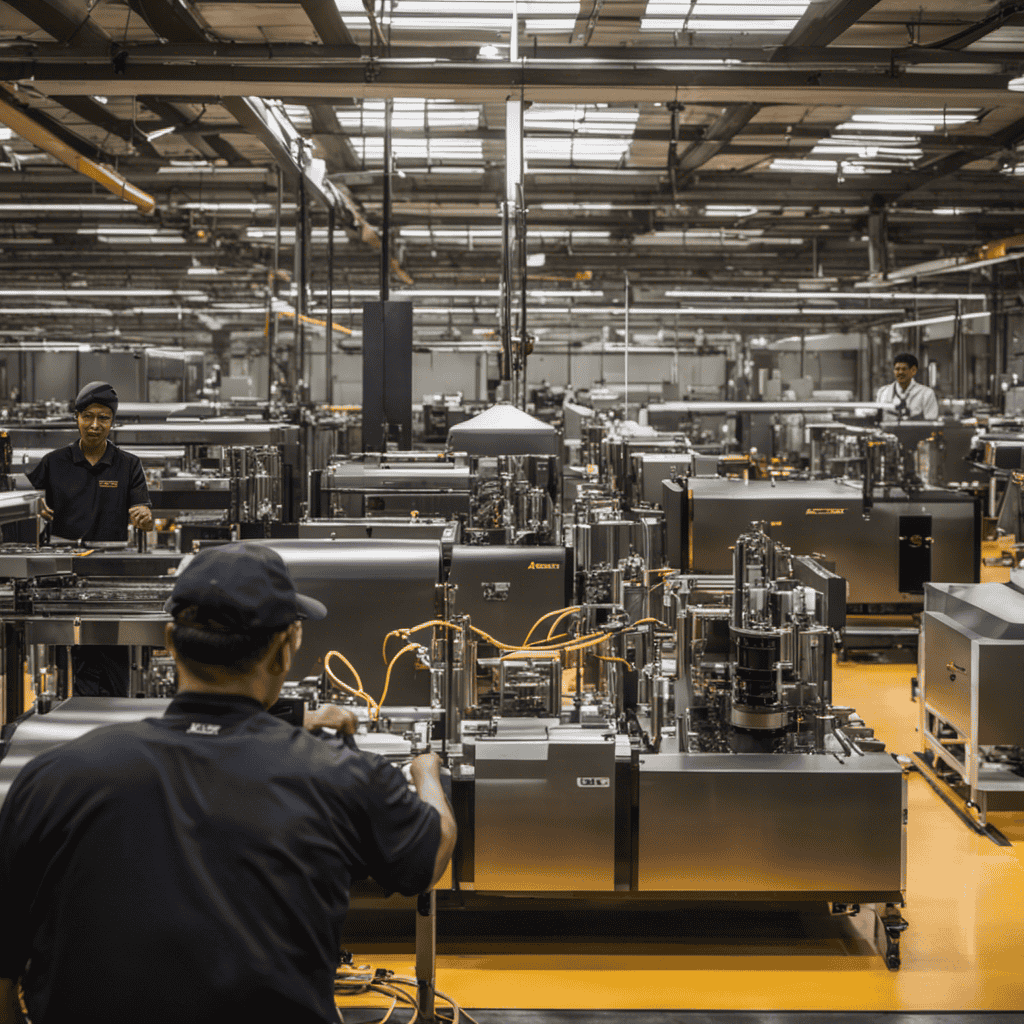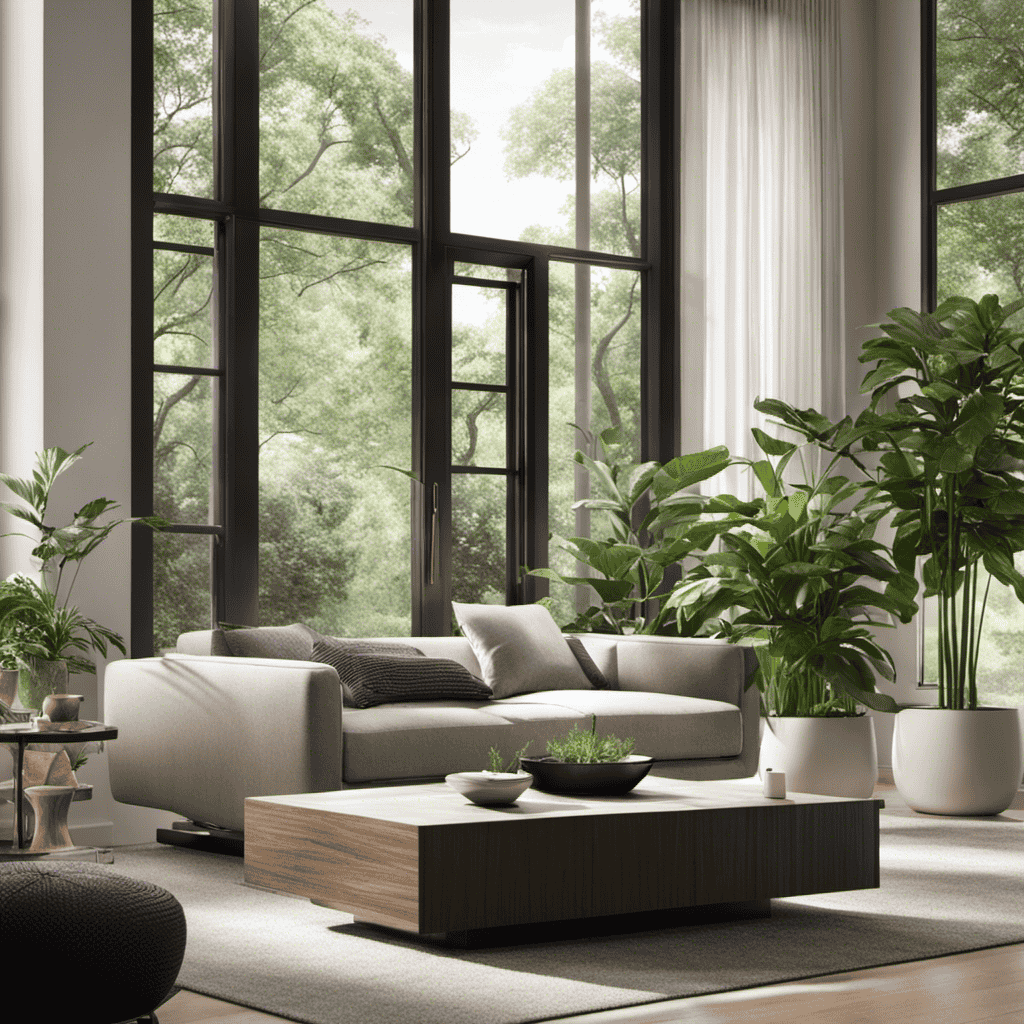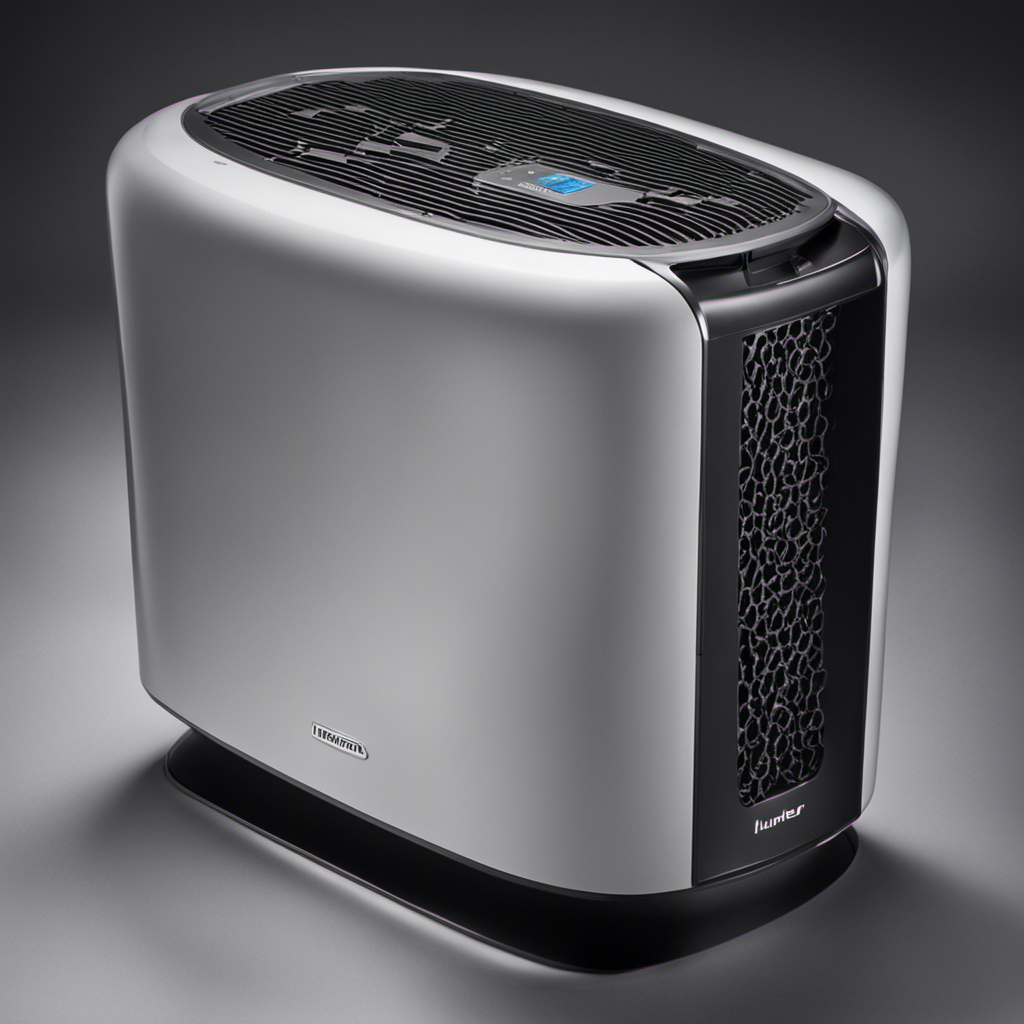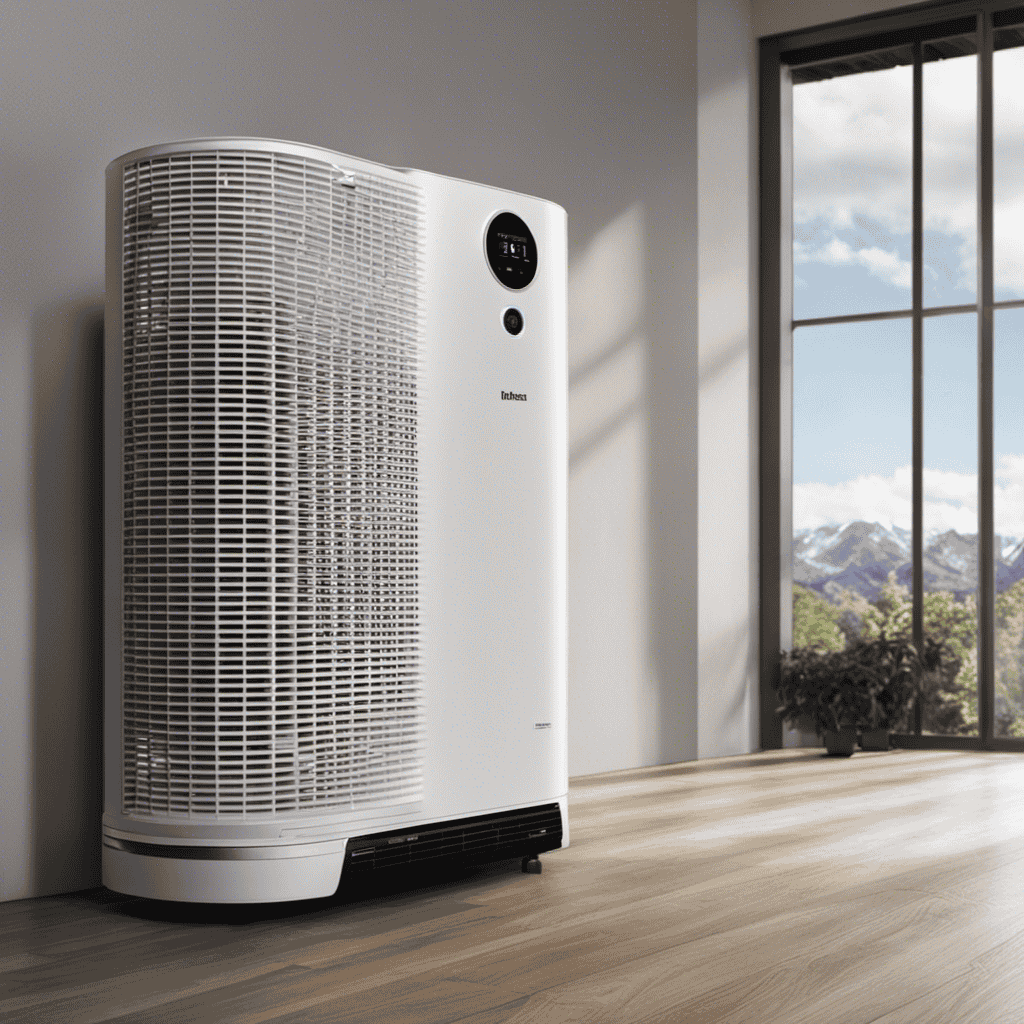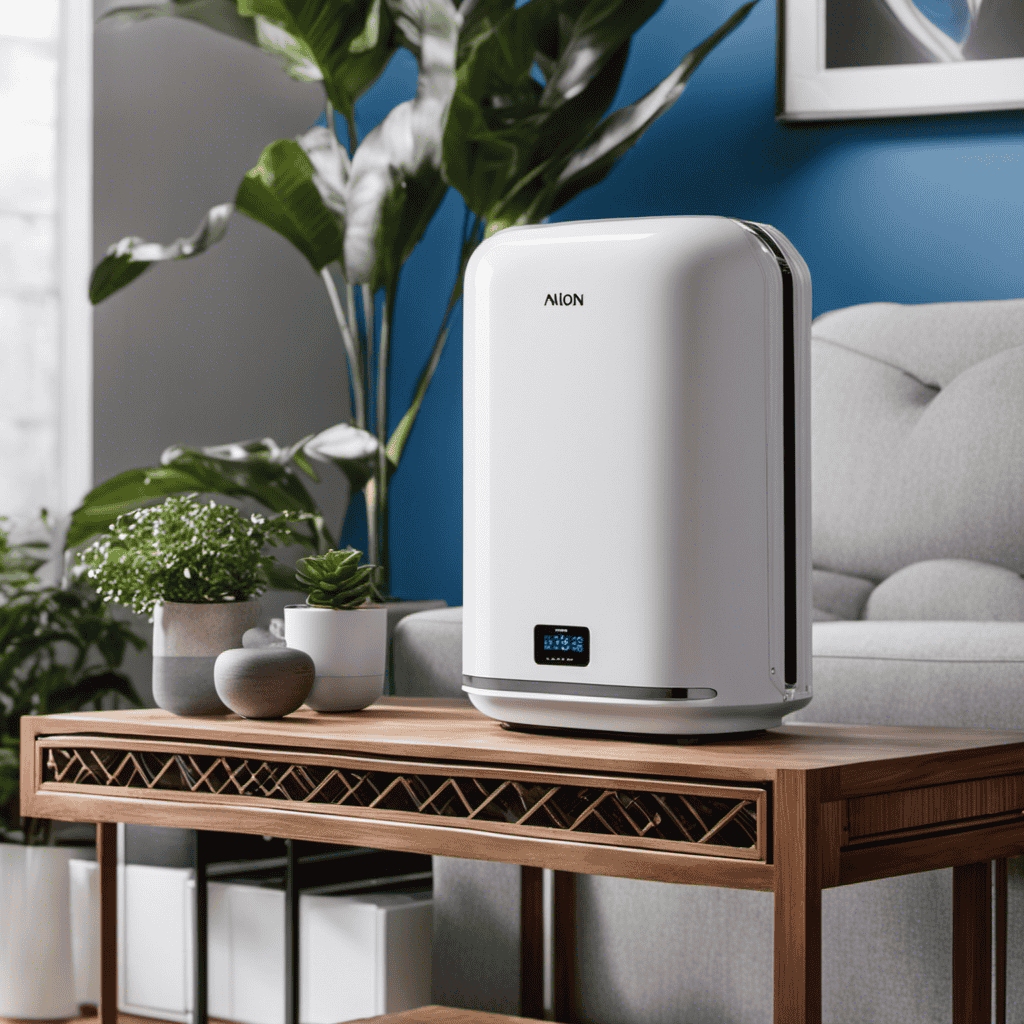As a person who has battled allergies for many years, I recognize the significance of having clean air within my household. This is why I made the choice to purchase an air purifier. The investment has not only boosted my health significantly but has also made a noticeable enhancement in the general air quality.
In this article, I will delve into the reasons why you should consider buying an air purifier, the factors to consider when making a purchase, and how different types of purifiers can help combat common air pollutants.
Plus, I’ll share some tips for maintaining and maximizing the effectiveness of your purifier.
Key Takeaways
- Air purifiers improve indoor air quality and reduce the risk of respiratory issues like asthma and allergies.
- Air purifiers are a cost-effective solution for maintaining a healthy environment and can potentially reduce the need for medication and doctor visits.
- When buying an air purifier, consider factors such as room size, filter type, noise level, cost considerations, and energy efficiency.
- Air purifiers can help remove common air pollutants such as dust, pollen, pet dander, mold spores, and smoke, improving indoor air quality and reducing health risks.
Health Benefits of Air Purifiers
Air purifiers can help improve indoor air quality, reducing the risk of respiratory issues like asthma and allergies. They are a cost-effective solution for maintaining a healthy environment at home or in the office. While the initial purchase cost may vary depending on the model and features, the long-term benefits outweigh the expense.
Air purifiers effectively remove harmful particles from the air, such as dust, pollen, pet dander, and even mold spores. By doing so, they help to alleviate symptoms and prevent the onset of respiratory conditions. Furthermore, air purifiers can significantly reduce the need for medication and doctor visits, resulting in potential cost savings in the long run.
Additionally, air purifiers have a positive environmental impact by reducing the reliance on chemical-based cleaners and air fresheners that can contribute to indoor air pollution.
Factors to Consider When Buying an Air Purifier
When considering an air purifier, it’s important to take into account factors such as the size of your living space and the specific air quality concerns you have. Here are some important things to consider:
-
Room size: Make sure to choose an air purifier that is suitable for the size of your room. A purifier that is too small may not effectively clean the air, while one that is too large may consume unnecessary energy.
-
Filter type: Different air purifiers use different types of filters, such as HEPA or activated carbon. Consider your specific needs and choose a filter that can effectively remove the pollutants you are concerned about.
-
Noise level: If you plan to use the air purifier in your bedroom or living room, it’s important to consider the noise level. Look for models that operate quietly to avoid any disturbances.
-
Cost considerations: Take into account the initial cost of the air purifier, as well as any ongoing maintenance costs, such as filter replacements.
-
Energy efficiency: Look for air purifiers that are energy efficient to minimize electricity consumption and save on your utility bills.
Considering these factors will help you make an informed decision and choose the right air purifier for your needs.
Now let’s explore common air pollutants and how air purifiers can help tackle them.
Common Air Pollutants and How Air Purifiers Can Help
One important factor to consider is the specific type of filter that can effectively remove the common air pollutants you are concerned about. Indoor air quality is a significant concern, as it can greatly impact our health and well-being. Air purifiers offer a solution by removing harmful particles and pollutants from the air. Here is a table that highlights some common air pollutants and how air purifiers can help:
| Common Air Pollutants | How Air Purifiers Can Help |
|---|---|
| Dust | Traps and filters out dust particles, reducing allergies and respiratory issues. |
| Pollen | Removes pollen from the air, providing relief for those with seasonal allergies. |
| Pet dander | Captures pet dander, helping to alleviate symptoms for pet allergy sufferers. |
| Mold spores | Filters out mold spores, preventing the spread of mold and reducing respiratory problems. |
| Smoke | Eliminates smoke particles, improving indoor air quality and reducing the risk of smoke-related health issues. |
| VOCs (Volatile Organic Compounds) | Removes harmful chemicals from the air, improving overall air quality and reducing health risks. |
Having an air purifier that effectively targets and eliminates these common air pollutants can greatly benefit our indoor air quality and ultimately our health. Clean air promotes better respiratory function, reduces allergies, and creates a healthier living environment.
Different Types of Air Purifiers and Their Features
To understand the different types of air purifiers and their features, you should research and compare various models available on the market. It’s important to find the right air purifier that suits your specific needs, especially if you suffer from allergies.
Here are some key features and benefits to consider:
-
Portability: Portable air purifiers are great for those who want to move the purifier from room to room, providing clean air wherever you go.
-
HEPA Filters: Look for air purifiers with High Efficiency Particulate Air (HEPA) filters. These filters are designed to capture small particles like pollen, dust mites, and pet dander, reducing allergy symptoms.
-
Activated Carbon Filters: These filters are effective at removing odors and harmful chemicals from the air, making your living space fresher and healthier.
-
UV-C Technology: Some air purifiers use ultraviolet (UV) light to kill bacteria, viruses, and mold spores, ensuring cleaner air quality.
-
Smart Features: Many modern air purifiers come with smart features like Wi-Fi connectivity and mobile apps, allowing you to control and monitor the purifier remotely.
Tips for Maintaining and Getting the Most Out of Your Air Purifier
Regularly cleaning and changing the filters in my air purifier is essential for maintaining its effectiveness and ensuring that it continues to provide clean and fresh indoor air.
Air purifier maintenance is crucial for maximizing its efficiency and getting the most out of it. Over time, the filters in an air purifier can become clogged with dust, allergens, and other particles, reducing its ability to effectively clean the air.
By regularly cleaning or replacing the filters, I can ensure that my air purifier is operating at its optimal level. Additionally, it is important to clean the exterior of the purifier and check for any signs of damage or wear.
Following these maintenance tips will help me keep my air purifier working efficiently and providing me with clean and healthy indoor air.
Frequently Asked Questions
How Much Electricity Does an Air Purifier Consume?
Air purifiers consume varying amounts of electricity depending on their size and features. It’s important to consider energy usage when purchasing one. Look for models with energy-saving features to minimize electricity consumption.
Can an Air Purifier Completely Eliminate All Allergens From the Air?
An air purifier can effectively reduce the presence of allergens in the air, but it may not completely eliminate them. However, it still offers numerous benefits, such as improved indoor air quality and reduced allergy symptoms.
Are There Any Health Risks Associated With Using an Air Purifier?
Using an air purifier has numerous health benefits. It effectively removes pollutants and allergens from the air, reducing the risk of respiratory issues. However, it’s important to choose a high-quality device to avoid potential health risks.
Can an Air Purifier Remove Odors From the Air?
Yes, an air purifier can remove odors from the air. It is one of the many benefits of using an air purifier. Regular air purifier maintenance ensures its effectiveness in eliminating odors and improving indoor air quality.
How Long Does It Take for an Air Purifier to Improve Indoor Air Quality?
It’s important to understand how long it takes for an air purifier to improve indoor air quality. By measuring its effectiveness, we can determine the immediate benefits it provides.
Conclusion
In conclusion, investing in an air purifier is a wise decision that can greatly improve the quality of your indoor air. With its ability to filter out harmful pollutants and allergens, an air purifier becomes your shield against invisible threats.
Imagine a serene sanctuary where each breath is crisp and pure, free from the clutches of pollutants. By considering factors such as room size, filtration efficiency, and maintenance requirements, you can choose the perfect air purifier tailored to your needs.
So take a step towards a healthier lifestyle and let the refreshing breeze of clean air embrace you.

